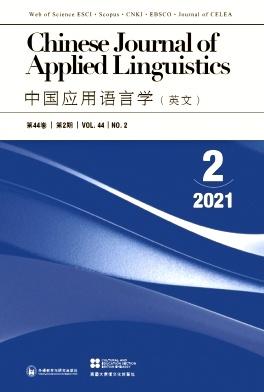The Influence of Combining Computer-Assisted Language Learning With Instruction on Chinese College Students’ L2 Pragmatic Ability
IF 1.1
4区 教育学
Q3 EDUCATION & EDUCATIONAL RESEARCH
引用次数: 0
Abstract
Abstract In the area of computer-assisted language learning (CALL), although a number of studies have adopted various CALL-based devices (e. g., blogs, gaming, and synthetic environments) to foster second language (L2) acquisition, the vital component of instruction has received little attention. The present study explored the usefulness of CALL-based communication in conjunction with instruction on EFL learners’ L2 pragmatic development. Sixty-two EFL students from a university in China were recruited for the current research. The experimental group communicated with a native English speaker through synchronous messaging via Skype and had two instructional sessions pertinent to compliment responses, while the control group interacted with a native English speaker via Skype without having the teaching intervention. Findings from an independent samples t-test demonstrated that the experimental group produced significantly more proper compliment responses in the immediate posttest than the control group (p < . 001). Moreover, a significant difference (p < . 001) was found for the experimental group between the pre-intervention and delayed post-intervention mean scores, suggesting that CALL coupled with teaching intervention had a long-term impact on learners’ L2 pragmatic development. These findings enrich our understanding of the beneficial and lasting influence of combining CALL with instruction on EFL students’ pragmatic development. In addition, pedagogical implications for deploying CALL paired with L2 pragmatics instruction are provided.计算机辅助语言学习与教学相结合对中国大学生第二语言语用能力的影响
摘要在计算机辅助语言学习领域,尽管许多研究采用了各种基于计算机辅助语言的设备(如博客、游戏和合成环境)来促进第二语言的习得,但教学的重要组成部分却很少受到关注。本研究探讨了基于CALL的交际与教学对英语学习者二语语用发展的作用。本研究招募了来自中国某大学的62名英语专业学生。实验组通过Skype通过同步消息与英语母语者进行交流,并进行了两次与赞美反应相关的教学会议,而对照组则在没有教学干预的情况下通过Skype与英语母语人士进行互动。独立样本t检验的结果表明,实验组在即时后测中产生的赞美反应明显高于对照组(p<.001)。此外,实验组干预前和干预后延迟的平均得分之间存在显著差异(p<.001),表明CALL与教学干预相结合对学习者的二语语用发展有长期影响。这些发现丰富了我们对CALL与教学相结合对EFL学生语用发展的有益和持久影响的理解。此外,还提供了使用CALL与二语语用学教学相结合的教学启示。
本文章由计算机程序翻译,如有差异,请以英文原文为准。
求助全文
约1分钟内获得全文
求助全文
来源期刊

Chinese Journal of Applied Linguistics
EDUCATION & EDUCATIONAL RESEARCH-
CiteScore
1.50
自引率
0.00%
发文量
377
期刊介绍:
The Chinese Journal of Applied Linguistics (CJAL) (formerly known as Teaching English in China – CELEA Journal) was created in 1978 as a newsletter by the British Council, Beijing. It is the affiliated journal of the China English Language Education Association (founded in 1981 and now the Chinese affiliate of AILA [International Association of Applied Linguistics]). The Chinese Journal of Applied Linguistics is the only English language teaching (ELT) journal in China that is published in English, serving as a window to Chinese reform on ELT for professionals in China and around the world. The journal is internationally focused, fully refereed, and its articles address a wide variety of topics in Chinese applied linguistics which include – but also reach beyond – the topics of language education and second language acquisition.
 求助内容:
求助内容: 应助结果提醒方式:
应助结果提醒方式:


